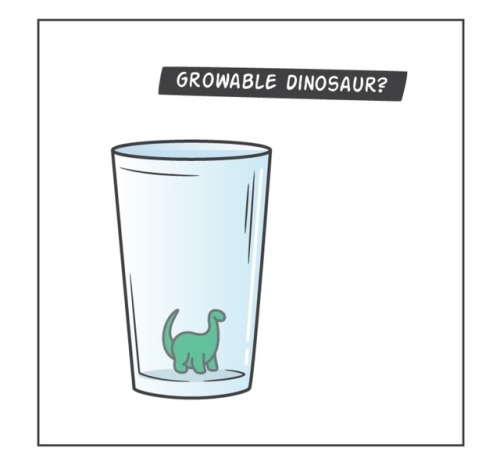Super Blue Blood Moon 2018

Super Blue Blood Moon 2018
Image credit: Chris Voigt
More Posts from Duxgregis and Others
My kind of lady

Happy birthday, Marie Curie! In 1903, Curie and her husband shared a Nobel Prize in Physics for the discovery of radium and polonium. She was the first woman to win this award and later, the first woman to become a professor at the University of Paris. In 1911 she won another Nobel Prize, this time in chemistry, for producing radium as a pure metal and for further studies on radioactive elements. During World War I, she devoted herself to using radioactivity to help people. She set up mobile x-ray vehicles for soldiers in France, which were nicknamed petites Curies (“little Curies”). In the 1920s, radium was considered a miracle cure—you could even buy “Radium” brand butter, cigarettes, and beer. We now know that radioactivity itself causes cancer, but thanks to Curie, radiation therapy is still used today as an effective way to target cancerous tissues. Photo: Tekniska museet
...what we stay alive for.














(via BoringEnormous)
I wonder what affect these types of events have on human perceptions
September 2017 Was 🔥 on the Sun
The Sun started September 2017 with flair, emitting 31 sizable solar flares and releasing several powerful coronal mass ejections, or CMEs, between Sept. 6-10.

Solar flares are powerful bursts of radiation. Harmful radiation from a flare cannot pass through Earth’s atmosphere to physically affect humans on the ground, however — when intense enough — they can disturb the atmosphere in the layer where GPS and communications signals travel.

CMEs are massive clouds of solar material and magnetic fields that erupt from the Sun at incredible speeds. Depending on the direction they’re traveling in, CMEs can spark powerful geomagnetic storms in Earth’s magnetic field.
As always, we and our partners had many missions observing the Sun from both Earth and space, enabling scientists to study these events from multiple perspectives. With this integrated picture of solar activity, scientists can better track the evolution of solar eruptions and work toward improving our understanding of space weather.

The National Oceanic and Atmospheric Administration (NOAA)’s Geostationary Operational Environmental Satellite-16, or GOES-16, watches the Sun’s upper atmosphere — called the corona — at six different wavelengths, allowing it to observe a wide range of solar phenomena. GOES-16 caught this footage of an X9.3 flare on Sept. 6, 2017.
This was the most intense flare recorded during the current 11-year solar cycle. X-class denotes the most intense flares, while the number provides more information about its strength. An X2 is twice as intense as an X1, an X3 is three times as intense, and so on. GOES also detected solar energetic particles associated with this activity.

Our Solar Dynamics Observatory captured these images of X2.2 and X9.3 flares on Sept. 6, 2017, in a wavelength of extreme ultraviolet light that shows solar material heated to over one million degrees Fahrenheit.

JAXA/NASA’s Hinode caught this video of an X8.2 flare on Sept. 10, 2017, the second largest flare of this solar cycle, with its X-ray Telescope. The instrument captures X-ray images of the corona to help scientists link changes in the Sun’s magnetic field to explosive solar events like this flare.

Key instruments aboard our Solar and Terrestrial Relations Observatory, or STEREO, include a pair of coronagraphs — instruments that use a metal disk called an occulting disk to study the corona. The occulting disk blocks the Sun’s bright light, making it possible to discern the detailed features of the Sun’s outer atmosphere and track coronal mass ejections as they erupt from the Sun.
On Sept. 9, 2017, STEREO watched a CME erupt from the Sun. The next day, STEREO observed an even bigger CME. The Sept. 10 CME traveled away from the Sun at calculated speeds as high as 7 million mph, and was one of the fastest CMEs ever recorded. The CME was not Earth-directed: It side-swiped Earth’s magnetic field, and therefore did not cause significant geomagnetic activity. Mercury is in view as the bright white dot moving leftwards in the frame.

Like STEREO, ESA/NASA’s Solar and Heliospheric Observatory, or SOHO, uses a coronagraph to track solar storms. SOHO also observed the CMEs that occurred during Sept. 9-10, 2017; multiple views provide more information for space weather models. As the CME expands beyond SOHO’s field of view, a flurry of what looks like snow floods the frame. These are high-energy particles flung out ahead of the CME at near-light speeds that struck SOHO’s imager.

Our Interface Region Imaging Spectrometer, or IRIS, captured this video on Sept. 10, 2017, showing jets of solar material swimming down toward the Sun’s surface. These structures are sometimes observed in the corona during solar flares, and this particular set was associated with the X8.2 flare of the same day.

Our Solar Radiation and Climate Experiment, or SORCE, collected the above data on total solar irradiance, the total amount of the Sun’s radiant energy, throughout Sept. 2017. While the Sun produced high levels of extreme ultraviolet light, SORCE actually detected a dip in total irradiance during the month’s intense solar activity.
A possible explanation for this observation is that over the active regions — where solar flares originate — the darkening effect of sunspots is greater than the brightening effect of the flare’s extreme ultraviolet emissions. As a result, the total solar irradiance suddenly dropped during the flare events.
Scientists gather long-term solar irradiance data in order to understand not only our dynamic star, but also its relationship to Earth’s environment and climate. We are ready to launch the Total Spectral solar Irradiance Sensor-1, or TSIS-1, this December to continue making total solar irradiance measurements.

The intense solar activity also sparked global aurora on Mars more than 25 times brighter than any previously seen by NASA’s Mars Atmosphere and Volatile Evolution, or MAVEN, mission. MAVEN studies the Martian atmosphere’s interaction with the solar wind, the constant flow of charged particles from the Sun. These images from MAVEN’s Imaging Ultraviolet Spectrograph show the appearance of bright aurora on Mars during the September solar storm. The purple-white colors show the intensity of ultraviolet light on Mars’ night side before (left) and during (right) the event.
For all the latest on solar and space weather research, follow us on Twitter @NASASun or Facebook.
GOES images are courtesy of NOAA. Hinode images are courtesy of JAXA and NASA. SOHO images are courtesy of ESA and NASA.
Make sure to follow us on Tumblr for your regular dose of space: http://nasa.tumblr.com.
everyone always talks about the wendys twitter, but






let’s talk about moonpie’s twitter







WEEKLY COMIC PICKS FOR 6.4.2014
This week we review Nailbiter #2, Rise of the Magi #1, Big Trouble In Little China #1, Black Widow #7, and Original Sin #3.
We took some advice from one of our viewers and tried to make this episode as spoiler-free as possible which also makes for shorter, more digestible episodes. Check it out below and let us know what you think.
If you like these videos, please show your support by giving them a Thumbs-Up, leaving a comment, and/or subscribing to our channel. It would really mean a lot, plus it’s nice to have some form of interaction with you guys so we know that other people besides us are into this kind of stuff.
We hope you like this episode. Until next week, let us know what you’re reading in the comments!






Hey look, it’s these guys again. My website – My Facebook page – See me on LINE Webtoon!








Just Add Water

When you text San Francisco Museum of Modern Art how you’re feeling, it responds with a work of art that captures your mood.
GUYS! We live in an amazing world! I just texted the San Francisco Museum of Modern Art, “send me food,” and they sent me a picture of vegetables from their collection. My boyfriend texted them the cactus emoji and they sent back a picture of a cactus. This is blowing my mind!

-
 unsuredefleur liked this · 1 month ago
unsuredefleur liked this · 1 month ago -
 photographingeverythingnearme reblogged this · 3 months ago
photographingeverythingnearme reblogged this · 3 months ago -
 mermaid-t-a-i-l liked this · 1 year ago
mermaid-t-a-i-l liked this · 1 year ago -
 guzgibi reblogged this · 1 year ago
guzgibi reblogged this · 1 year ago -
 guzgibi liked this · 1 year ago
guzgibi liked this · 1 year ago -
 sun-arrow-shot reblogged this · 2 years ago
sun-arrow-shot reblogged this · 2 years ago -
 soulsilencer reblogged this · 2 years ago
soulsilencer reblogged this · 2 years ago -
 kingtheloser reblogged this · 2 years ago
kingtheloser reblogged this · 2 years ago -
 faultywire reblogged this · 2 years ago
faultywire reblogged this · 2 years ago -
 soulemissary reblogged this · 2 years ago
soulemissary reblogged this · 2 years ago -
 rhizi reblogged this · 2 years ago
rhizi reblogged this · 2 years ago -
 phantomsmistress reblogged this · 2 years ago
phantomsmistress reblogged this · 2 years ago -
 dread-loxx liked this · 2 years ago
dread-loxx liked this · 2 years ago -
 love-is-my-superpower reblogged this · 2 years ago
love-is-my-superpower reblogged this · 2 years ago -
 love-is-my-superpower liked this · 2 years ago
love-is-my-superpower liked this · 2 years ago -
 ari-moongazer reblogged this · 2 years ago
ari-moongazer reblogged this · 2 years ago -
 ari-moongazer liked this · 2 years ago
ari-moongazer liked this · 2 years ago -
 washingtonsqpark reblogged this · 2 years ago
washingtonsqpark reblogged this · 2 years ago -
 bellamuerte-hotel reblogged this · 2 years ago
bellamuerte-hotel reblogged this · 2 years ago -
 urbanorama liked this · 2 years ago
urbanorama liked this · 2 years ago -
 taneah001 liked this · 2 years ago
taneah001 liked this · 2 years ago -
 yolieliz liked this · 2 years ago
yolieliz liked this · 2 years ago -
 bigmamariela reblogged this · 2 years ago
bigmamariela reblogged this · 2 years ago -
 moon-reminds-me reblogged this · 2 years ago
moon-reminds-me reblogged this · 2 years ago -
 sinbad2021 liked this · 2 years ago
sinbad2021 liked this · 2 years ago -
 tarekbahaa reblogged this · 2 years ago
tarekbahaa reblogged this · 2 years ago -
 tarekbahaa liked this · 2 years ago
tarekbahaa liked this · 2 years ago -
 dandelionliv-blog reblogged this · 2 years ago
dandelionliv-blog reblogged this · 2 years ago -
 moonblueby reblogged this · 3 years ago
moonblueby reblogged this · 3 years ago -
 moonblueby liked this · 3 years ago
moonblueby liked this · 3 years ago -
 redemoinhopsiquico reblogged this · 3 years ago
redemoinhopsiquico reblogged this · 3 years ago